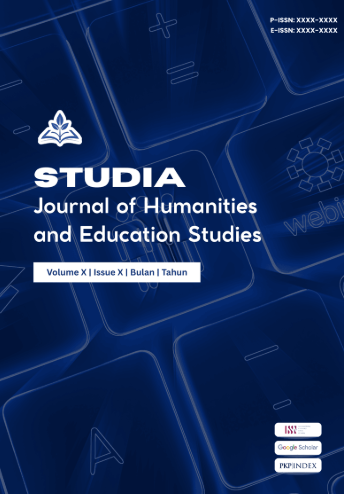Study on the Performance Style and Improvisational Methods of the Dangdut Flute in the Original Genre Section Band
Keywords:
Dangdut flute, improvisational methods, musical expression, performance styleAbstract
This research explores the performance style and improvisational methods of the dangdut flute in the Original Genre Section Band, focusing on their live interpretation of Cinta Rahasia. The flute, played by Bambang Kusmanto, serves not only as an accompaniment but also as a central expressive medium that enhances the lyrical and emotional character of the performance. Its role highlights the significance of the flute in shaping dangdut’s musical identity through both stylistic techniques and spontaneous improvisation. The study applies a qualitative descriptive method, with data collected through observation, semi-structured interviews, and performance documentation. Analytical procedures include performance analysis of musical techniques such as articulation, dynamics, and ornamentation, as well as thematic coding of improvisational practices and ensemble interactions. Results show that the flute’s performance style is marked by staccato, legato, vibrato, glissando, tremolo, and altissimo techniques, supported by posture, embouchure, and controlled breathing. Improvisation combines chordal and modal approaches, licks, rhythmic flexibility, and ornamental devices. The findings affirm that the flute embodies technical mastery, cultural symbolism, and dialogical interaction, making it a defining element of dangdut performance.
Downloads
References
Hadi, S., & Sunarto, S. (2025). The complexity of genre and discourse in Indonesian popular music: a systematic literature review. Rast Musicology Journal, 13(2), 105-126.
Handayani, R. (2022). Improvisation theory and performance practice in Indonesian popular music. Journal of Performing Arts Studies, 14(3), 201–215.
Hidayat, A. (2020). Ethnographic approaches in analyzing Indonesian music performance. Asian Journal of Musicology, 8(2), 145–162.
Imanuel, D. (2020). Improvisation and cultural identity in Southeast Asian music traditions. International Review of Ethnomusicology, 12(1), 33–49.
Olsen, P. (2025). Unlocking aural skills through improvisation. In Improvisation Methods and Practices in Southeast Asia (pp. 94-110). Routledge.
Prasetyo, T. (2020). Socio-economic dimensions of musical improvisation in Indonesia. Indonesian Journal of Cultural Studies, 7(4), 220–234.
Putri, N. (2021). Breath control and ornamentation in dangdut flute performance. Music Education and Practice Journal, 9(3), 189–201.
Rahmawati, S. (2018). The role of rhythm instruments in modern dangdut music. Indonesian Journal of Performing Arts, 6(1), 55–70.
Rohman, A. (2023). Improvisational practices in contemporary Indonesian popular genres. Journal of Popular Music Studies, 31(2), 98–112.
Santoso, B. (2019). Flute techniques in Indonesian folk and classical music traditions. Journal of Traditional Music Studies, 10(2), 73–88.
Setiawan, L. (2021). Local music genres in education: Dangdut as a pedagogical resource. International Journal of Music Education, 29(4), 256–270.
Standiford, H. (2024). Voices of Langgam Jawa: Gender, Genre, and Repertoire in Javanese Popular Music (Doctoral dissertation, University of Pittsburgh).
Standiford, H. (2024). Voices of Langgam Jawa: Gender, Genre, and Repertoire in Javanese Popular Music (Doctoral dissertation, University of Pittsburgh).
Suryani, M. (2021). Local genres and global music hybridity: The case of dangdut. Journal of World Music, 18(3), 141–158.
Suwahyono, A., Sarjoko, M., Kristiandri, D., Winarko, J., & Dewi, V. E. (2023, March). Arrangement Approach to Improve Music Creativity of Keroncong at Vocational School. In International Joint Conference on Arts and Humanities 2022 (IJCAH 2022) (pp. 1662-1667). Atlantis Press.
Wibisono, A. (2022). Performance styles and cultural narratives in Indonesian popular music. Journal of Cultural Performance Studies, 15(1), 65–82.
Downloads
Published
Issue
Section
License
Copyright (c) 2025 Ayu Soraya (Author)

This work is licensed under a Creative Commons Attribution-ShareAlike 4.0 International License.













